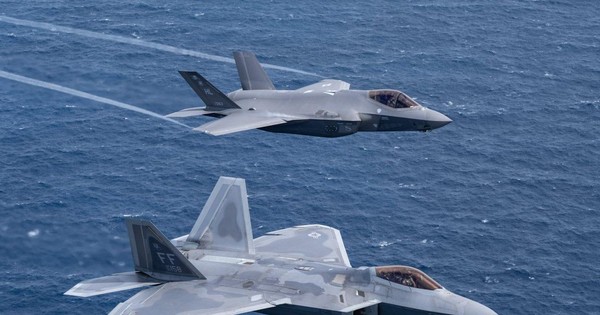In the elite echelon of military aviation, the F-22 Raptor reigns supreme as a symbol of technological prowess and tactical superiority. Developed by Lockheed Martin and introduced into service with the United States Air Force, the F-22 Raptor represents the zenith of stealth technology, advanced avionics, and unrivaled maneuverability. As one of the most advanced fighter jets ever created, the F-22 has redefined air combat and continues to set the standard for next-generation fighter aircraft.
The Stealth Revolution
The F-22 Raptor is a marvel of stealth engineering, designed to operate with unprecedented levels of invisibility to enemy radar systems. Its sleek, angular design and cutting-edge stealth coating enable it to evade detection, allowing it to penetrate hostile airspace and carry out missions with minimal risk of being engaged by enemy defenses. The aircraft’s stealth capabilities are complemented by its advanced radar-absorbent materials and meticulously crafted airframe, which together reduce its radar cross-section to near invisibility.
This stealth technology is not merely a defensive feature but a strategic advantage that enhances the F-22’s ability to conduct surprise attacks, gather intelligence, and maintain air superiority without being easily detected. The Raptor’s design allows it to strike first and strike effectively, a crucial factor in modern air combat scenarios.

Superior Performance and Agility
The F-22’s performance is nothing short of extraordinary. Powered by two Pratt & Whitney F119-PW-100 engines, the F-22 boasts supercruise capability, enabling it to fly at supersonic speeds without the need for afterburners. This feature provides the aircraft with a significant edge in both speed and range, allowing it to cover vast distances and engage targets rapidly.
The F-22’s advanced flight control system and thrust vectoring nozzles contribute to its exceptional maneuverability. The aircraft can execute complex aerial maneuvers with precision, outmaneuvering adversaries and gaining the upper hand in dogfights. Its agility is further enhanced by its advanced avionics and sensor fusion, which provide the pilot with comprehensive situational awareness and real-time data for optimal decision-making.
Cutting-Edge Avionics and Sensor Systems
At the heart of the F-22 Raptor’s capabilities is its sophisticated avionics suite. The aircraft is equipped with the AN/APG-77 radar, a powerful and highly advanced radar system that offers long-range detection and tracking capabilities. The radar’s low probability of intercept and advanced jamming resistance make it highly effective in contested environments, allowing the F-22 to detect and engage targets even in the presence of electronic countermeasures.
The F-22 also features a range of other advanced sensors, including infrared search and track (IRST) systems and electronic warfare (EW) equipment. These sensors work in concert to provide the pilot with a comprehensive picture of the battlespace, enhancing the aircraft’s effectiveness in both air-to-air and air-to-ground operations.
Strategic Impact and Global Presence
Since its introduction, the F-22 Raptor has played a pivotal role in maintaining air superiority and supporting various military operations. Its advanced capabilities have made it a critical asset for the United States Air Force, ensuring dominance in air combat and providing a technological edge over potential adversaries.
Although the F-22 is primarily used by the U.S. Air Force, its influence extends beyond national borders. The aircraft’s technological advancements and performance have set new benchmarks for fighter aircraft globally, inspiring other nations to pursue similar advancements in their own military aviation programs.

Challenges and Future Prospects
Despite its groundbreaking technology, the F-22 Raptor has faced challenges, including high production costs and limited numbers. The aircraft’s production was curtailed in favor of other programs, leading to a relatively small fleet. However, ongoing maintenance and upgrades are ensuring that the F-22 remains a formidable and relevant asset in the face of evolving threats.
Looking to the future, the F-22 Raptor’s legacy will continue to influence the development of next-generation fighter aircraft. Its technological innovations and performance benchmarks will serve as a foundation for future advancements in stealth, avionics, and aerial combat capabilities.

Conclusion
The F-22 Raptor stands as a testament to the cutting-edge advancements in modern military aviation. With its unparalleled stealth, superior performance, and advanced avionics, the F-22 represents the pinnacle of fighter jet technology. As it continues to serve and evolve, the F-22 Raptor will remain a symbol of air superiority and a key player in shaping the future of aerial warfare. Its legacy of innovation and excellence ensures that it will continue to inspire and influence the next generation of fighter aircraft for years to come.





